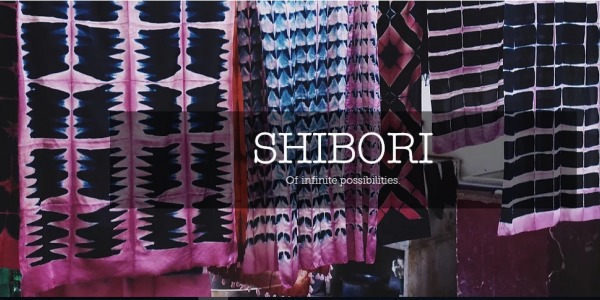Currency
| Free Shipping pan UAE on orders above 300 AED & GCC on orders above 1000 AED | Shop Independent Labels | Shop Local | #supportsmallbusiness |
Itajime Shibori - Artisans & Process
July 14, 2023

Itajime, literally meaning "board-clamping" in Japanese, is one technique of shibori which uses pieces of wood clamped together around sections of folded fabric to resist the dye in particular shapes.
Traditionally, the cloth was clamped between 2 wooden blocks intricately carved with the negative of the design one wanted to achieve. In modern times, more simple shaped blocks are used to resist the dye.
Perched on the far western edge of India, squeezed between the Arabian Sea and the Pakistani border, and spanning the Thar Desert and the Great Rann of Kutch, sits the desert region of Kutch, located in the state of Gujarat.
This region, as well as Sindh across the border in Pakistan, is a rich, cultural melting pot and, in our opinion, a textile Mecca. Despite historical challenges, such as division and migration at the time of partition and reoccurring earthquakes, and an extreme climate, a vast number of unique and beautiful textile traditions local to this region thrive here. This is thanks to the dedication of it's Master Artisans and a handful of local organisations.
These Master Artisans are art/craft ambassadors for ancient textile traditions, and are celebrated by textile aficionados worldwide for bringing Kutch's textile heritage successfully into the 21st century.
This success has been based on marrying the traditional with the contemporary, on promoting the highest quality of craftsmanship, and on widely sharing their rich stories through collaborating with designers around the world.
By successfully promoting their heritage, thousands of village-based artisans in the region are able to earn an income through spinning, weaving, dyeing, embroidery, bandhani and ajrakh.
Two of these Ambassadors-cum-Master Artisans are the Brothers Khatri: Abdullah and Jabbar, who live and work in Bhuj, the district capital.
The Khatri caste originally came from Punjab. They migrated to Sindh, where they converted to Islam, and then moved into the Kutch region of today’s Gujarat. Khatri artisanal families settled in areas where they had access to resources like fresh, running water.
Since the 17th century, the brother’s ancestors were practicing the local and ancient art of bandhani tie-dye. When Abdullah was 17 years old he began learning bandhani from relatives and took it up to earn some pocket money. This grew into a business with his brother.
Today they work with 200 rural women on bandhani and are known far and wide for their innovation and exceptional work. Jabbar developed his innovations in bandhani to such a level that he was awarded the prestigious UNESCO Seal of Excellence in both 2006 and 2007.




Validate your login
Sign In
Create New Account